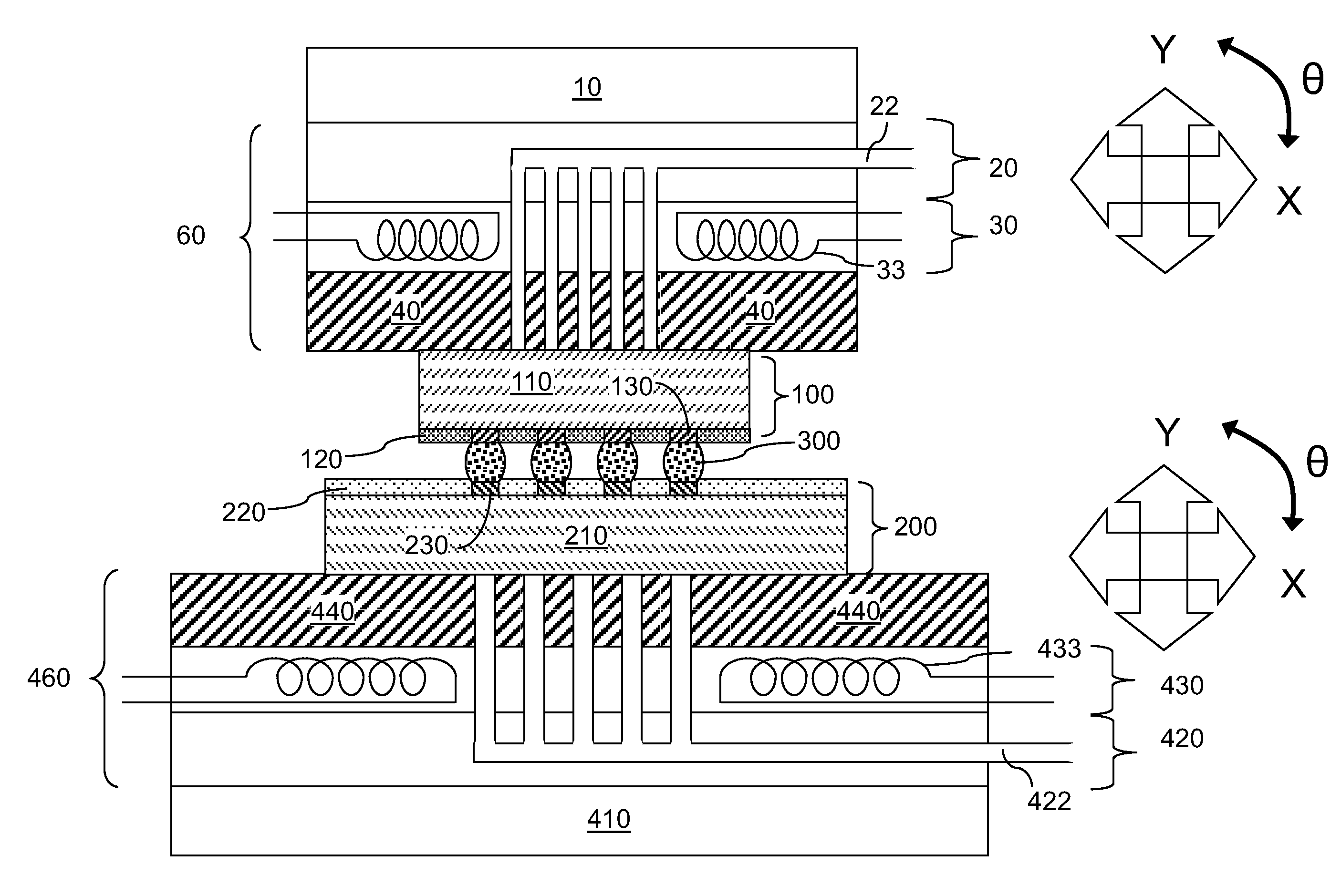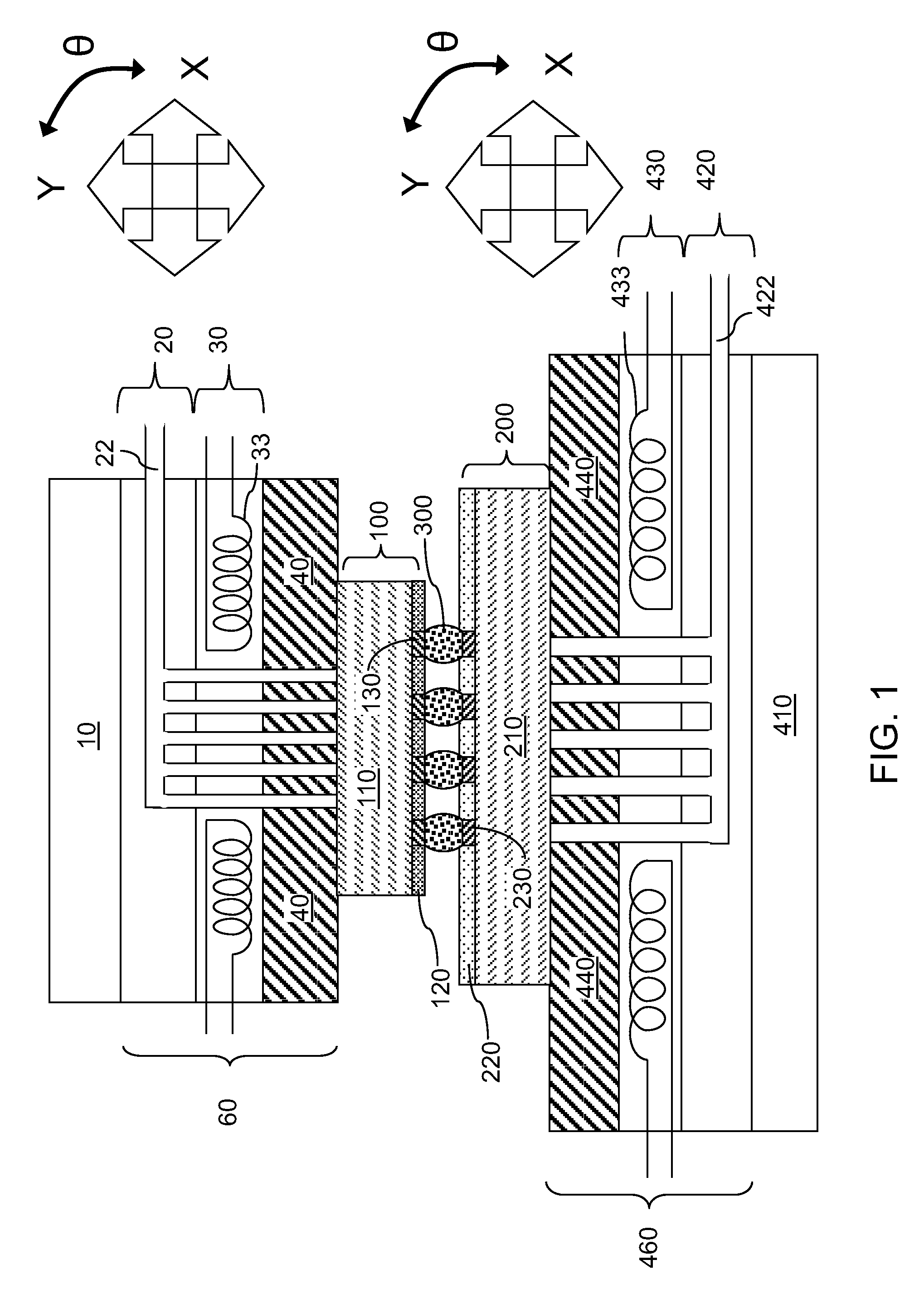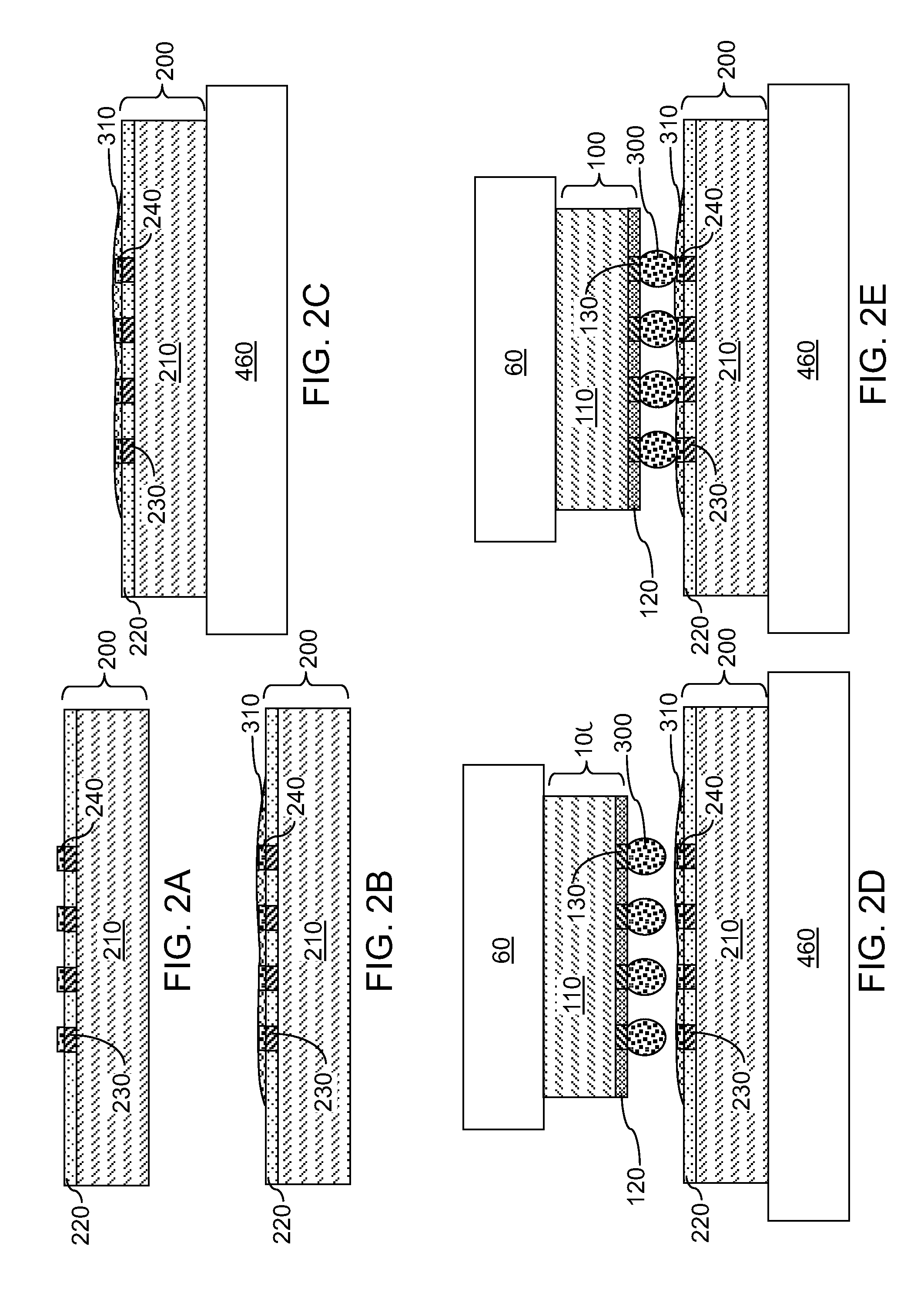Flip chip assembly method employing post-contact differential heating
a chip and differential heating technology, applied in the direction of welding/cutting media/materials, manufacturing tools, soldering apparatus, etc., can solve the problems of c4 balls or any other type of solder balls, semiconductor chip(s) to fail during the connection, and the problem of mechanical stress caused by the mismatch between cte's is exacerbated, so as to improve the integrity of the solder joint
- Summary
- Abstract
- Description
- Claims
- Application Information
AI Technical Summary
Benefits of technology
Problems solved by technology
Method used
Image
Examples
second embodiment
[0075]In the second embodiment, the second substrate 200 includes an array of metal structures such as an array of second bonding pads 230. The array of solder material portions 300 is bonded to the array of second bonding pads 230. The flux 310 may be optionally applied around the array of solder material portions 300 thereafter.
[0076]The first substrate 100 includes an array of metal pillars 330 and includes a metallic material such as copper. In one case, the array of metal pillars 330 can be an array of copper pillars consisting substantially of copper. The array of metal pillars 330 protrudes out of the surface of a first substrate 100, which is a bottom surface of the first substrate 100 while the first substrate 100 is held upside down.
first embodiment
[0077]The first substrate 100 is held at the second temperature, and the second substrate 200 is held at the first temperature employing the same temperature control schemes as in the
[0078]The processing steps of FIGS. 2E, 2F, and 2G are subsequently performed to form the second exemplary structure illustrated in FIG. 3B. At this step, the distance between the first substrate 100 and the second substrate 200 is decreased below the bonding distance.
[0079]In the second embodiment, the array of solder material portions 300 is bonded to the array of metal pillars 330 when the array of solder material portions 300 is brought into physical contact with the second substrate 200. The array of solder material portions 300 contacts sidewalls of the array of metal pillars after the array of solder material portions is brought into physical contact with the second substrate 200. The temperature of the first substrate 100 is maintained at the third temperature at this step as in the first embodi...
third embodiment
[0083]In the third embodiment, the array of solder material portions 300 can be bonded to an array of metal structures located on the one of the two substrates. FIG. 4A illustrates a case in which the array of solder balls 300 is bonded to the first substrate 100 before the first substrate 100 is heated to the second temperature. In this case, the array of solder balls 300 can be bonded to the array of first bonding pads 130. The second substrate 200 may, or may not, not include a second surface dielectric layer 220. The first substrate 100 includes a first array of metal structures such as an array of second bonding pads 130. A flux is not required in this embodiment, but may optionally be employed.
[0084]A first array of metal structures (such as bonding pads or metal pillars) is located on the first substrate 100, and a second array of metal structures 430 is located on the second substrate 200. In general, the array of solder material portions 300 is bonded to one of the first su...
PUM
| Property | Measurement | Unit |
|---|---|---|
| melting temperature | aaaaa | aaaaa |
| temperature | aaaaa | aaaaa |
| temperature | aaaaa | aaaaa |
Abstract
Description
Claims
Application Information
 Login to View More
Login to View More - R&D
- Intellectual Property
- Life Sciences
- Materials
- Tech Scout
- Unparalleled Data Quality
- Higher Quality Content
- 60% Fewer Hallucinations
Browse by: Latest US Patents, China's latest patents, Technical Efficacy Thesaurus, Application Domain, Technology Topic, Popular Technical Reports.
© 2025 PatSnap. All rights reserved.Legal|Privacy policy|Modern Slavery Act Transparency Statement|Sitemap|About US| Contact US: help@patsnap.com



